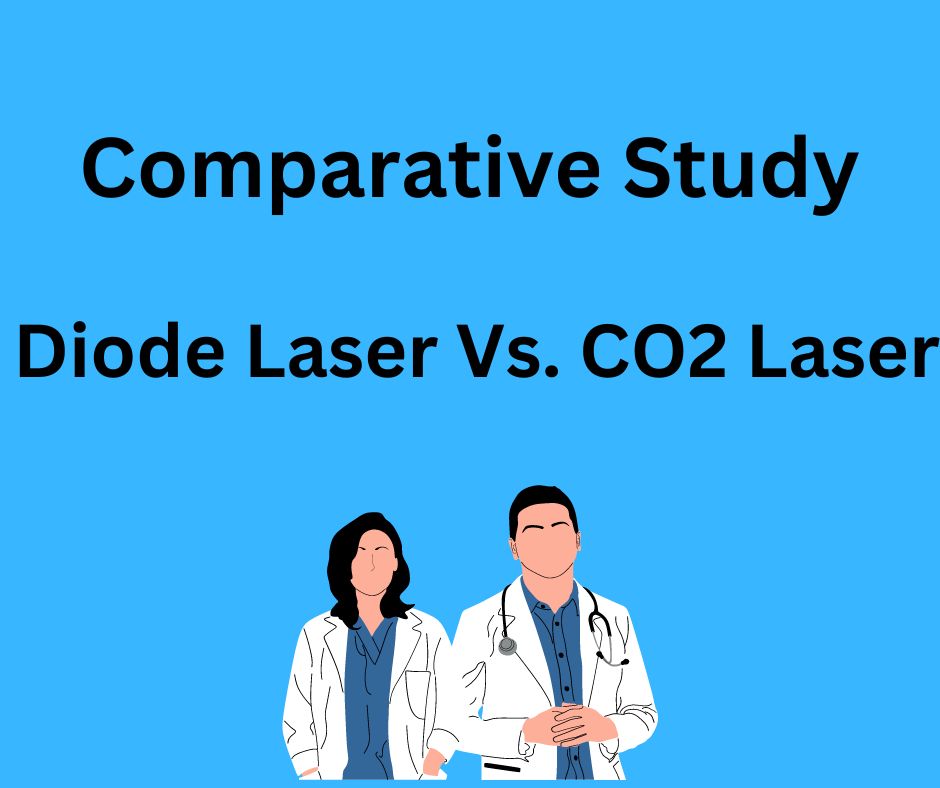A Comparative Study of Diode Laser and CO2 Laser in Proctology Surgery
Proctology surgeons often face the decision of choosing the right surgical laser for their procedures. Two popular options are Diode Laser and CO2 Laser, each with its unique features and benefits.
In this comparative study, we will explore various aspects of both Diode Laser and CO2 Laser to help surgeons make an informed choice.

While our intention is to provide an unbiased comparison, we also emphasize the advantages of Diode Laser, as this blog is published on the IMDSL website, a manufacturer of Diode Lasers.
Wavelength
Diode Laser: Diode Lasers typically emit light at wavelengths between 810nm and 980nm. This wavelength range is suitable for various surgical applications, including proctology procedures.
CO2 Laser: CO2 Lasers operate at a wavelength of 10,600nm. This wavelength is well-absorbed by water, making it effective for tissue ablation and coagulation.
Advantage: Both lasers have their advantages in terms of wavelength. Diode Lasers offer versatility, while CO2 Lasers excel in precise tissue interaction. The choice depends on the specific needs of the surgery.
Tissue Interaction
Diode Laser: Diode Lasers are known for their excellent hemostasis, making them ideal for surgeries requiring minimal bleeding. They also offer good tissue penetration and coagulation.
CO2 Laser: CO2 Lasers provide precise tissue vaporization and minimal thermal damage to surrounding tissues. They are particularly effective for fine incisions and tissue removal.
Advantage: CO2 Lasers have an advantage when it comes to precision, while Diode Lasers are favored for their hemostatic properties.
Depth of Penetration
Diode Laser: Diode Lasers penetrate tissues to a depth of 4-5mm, making them suitable for various proctology procedures, including hemorrhoidectomy and fistulectomy.
CO2 Laser: CO2 Lasers have a shallower depth of penetration, making them ideal for superficial tissue treatments and precise incisions.
Advantage: Diode Lasers have an advantage for procedures requiring deeper tissue penetration.
Recovery Time
Diode Laser: Diode Laser surgeries are associated with shorter recovery times due to reduced tissue trauma and minimal bleeding.
CO2 Laser: CO2 Laser surgeries may have slightly longer recovery periods due to the precision and thermal effects on tissue.
Advantage: Diode Lasers are preferred for quicker patient recovery.
Cost
Diode Laser: Diode Lasers are generally more cost-effective compared to CO2 Lasers, making them a practical choice for many healthcare facilities.
CO2 Laser: CO2 Lasers are known to be more expensive, primarily due to their advanced technology and precision.
Advantage: Diode Lasers have a cost advantage without compromising on quality.
Maintenance
Diode Laser: Diode Lasers typically require less maintenance, with longer-lasting components.
CO2 Laser: CO2 Lasers may require more frequent maintenance due to their more complex design.
Advantage: Diode Lasers offer lower maintenance costs and less downtime.
In conclusion, both Diode Laser and CO2 Laser have their merits in proctology surgery. Diode Lasers offer versatility, effective hemostasis, and cost-efficiency. CO2 Lasers provide precise tissue interaction but come at a higher cost.
While both options have their place in the field, we, as IMDSL, advocate for Diode Lasers due to their well-rounded performance, shorter recovery times, and cost-effectiveness. Ultimately, the choice between Diode Laser and CO2 Laser should be based on the specific requirements of the surgery and the surgeon’s preferences. For versatile, efficient, and cost-effective proctology procedures, Diode Laser remains an excellent choice.


Comments